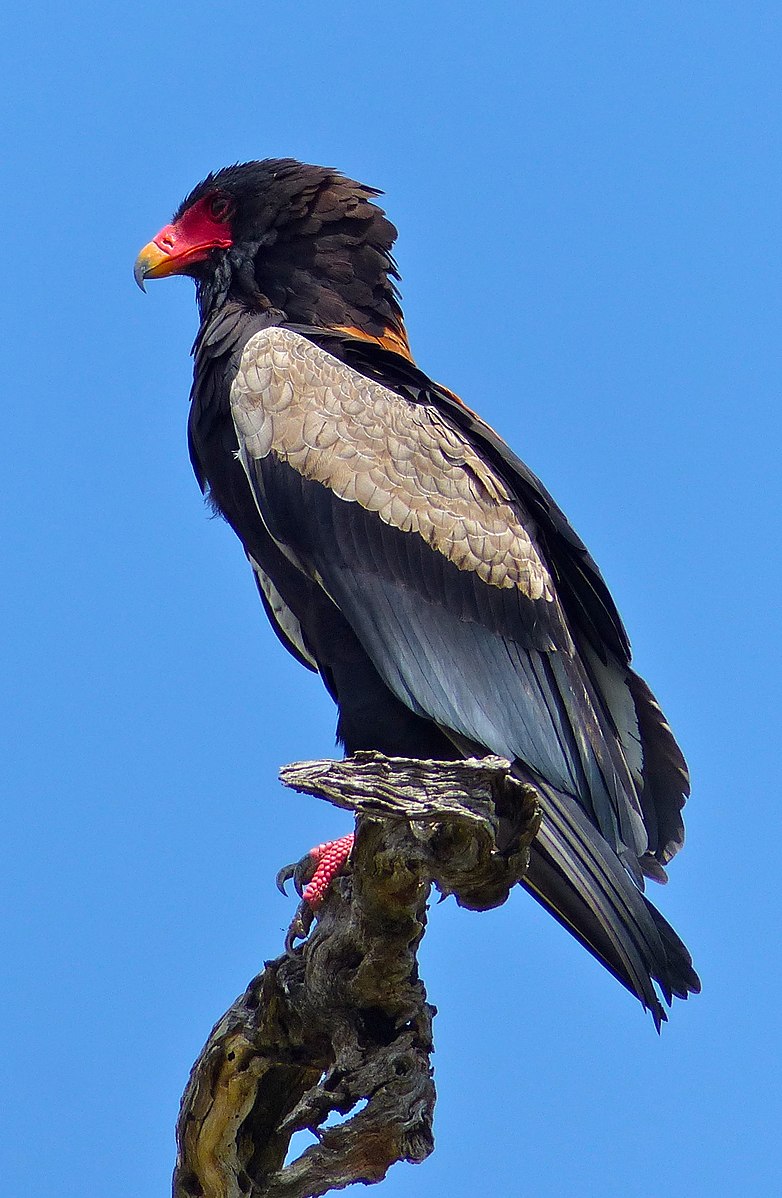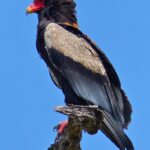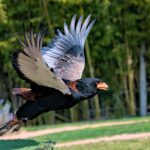Bateleur eagles, scientifically known as Terathopius ecaudatus, are known for their exceptional eyesight, which is crucial for their hunting and scavenging habits. While the exact distance these birds can see is not readily available, their vision is adapted for long-distance observation, allowing them to spot potential prey or food sources from great heights.
The Impressive Eyesight of Bateleur Eagles
Bateleur eagles have several adaptations that contribute to their exceptional eyesight:
-
Binocular Vision: Like many birds of prey, bateleur eagles have eyes positioned on the front of their heads, giving them binocular vision. This allows them to accurately judge distances and depth, which is essential for hunting and navigating their environment.
-
High Visual Acuity: Bateleur eagles have a high concentration of photoreceptors (rods and cones) in their retinas, which enhances their visual acuity. This means they can see fine details and small movements from great distances.
-
Specialized Fovea: Bateleur eagles, like other raptors, have a specialized fovea, a small, highly sensitive area in the center of their retina. This fovea allows them to focus on specific targets with incredible precision, making it easier to spot and track prey.
-
Ultraviolet Vision: Bateleur eagles, along with many other birds, can see ultraviolet light, which is invisible to the human eye. This ability helps them detect subtle movements and patterns that may be invisible to other predators, giving them an advantage in locating and tracking their prey.
How Far Can Bateleur Eagles See?
 Image source: Bateleur Eagle By Bernard DUPONT
Image source: Bateleur Eagle By Bernard DUPONT
While the exact distance that bateleur eagles can see is not well-documented, their exceptional eyesight is estimated to allow them to spot prey or carrion from several kilometers away. Some studies suggest that bateleur eagles can detect small prey, such as rodents or reptiles, from a distance of up to 5 kilometers (3.1 miles) when soaring at high altitudes.
This long-distance vision is crucial for their hunting and scavenging behavior, as bateleur eagles spend a significant amount of time (8-9 hours per day) in the sky, covering vast distances in search of food. Their ability to spot potential prey or carrion from great heights allows them to efficiently locate and target their food sources.
Factors Affecting Bateleur Eagle’s Vision
Several factors can influence the distance at which bateleur eagles can effectively see:
-
Altitude: Bateleur eagles are known to soar at high altitudes, sometimes reaching up to 2,000 meters (6,560 feet) above the ground. The higher they fly, the farther they can see, as the curvature of the Earth and the lack of obstructions allow them to scan a larger area.
-
Weather Conditions: Clear, sunny days with good visibility can enhance the bateleur eagle’s long-distance vision, allowing them to spot prey or carrion from greater distances. Conversely, poor weather conditions, such as haze, fog, or heavy cloud cover, can limit their visual range.
-
Prey Size and Contrast: Larger prey or prey that contrasts strongly with the surrounding environment are more easily detected by bateleur eagles from a distance. Smaller or well-camouflaged prey may be more challenging to spot, even for these birds’ exceptional eyesight.
-
Lighting Conditions: Bateleur eagles, like many birds, have excellent low-light vision, which can be advantageous during early morning or late afternoon hours when their prey may be more active. However, direct sunlight can also enhance their ability to spot prey or carrion from a distance.
Bateleur Eagles’ Hunting and Scavenging Strategies
Bateleur eagles’ long-distance vision is a crucial adaptation that supports their hunting and scavenging behaviors. They use their exceptional eyesight to:
-
Locate Prey: Bateleur eagles can spot small mammals, birds, and reptiles from great heights, allowing them to dive down and capture their prey with their powerful talons.
-
Detect Carrion: These eagles are also adept at spotting carrion, or dead animals, from a distance. Their keen eyesight helps them efficiently locate and scavenge on these food sources.
-
Navigate their Environment: Bateleur eagles’ long-distance vision helps them navigate their vast territories, allowing them to cover large areas in search of food and identify potential nesting sites or roosting areas.
Conclusion
While the exact distance that bateleur eagles can see is not well-documented, their exceptional eyesight is a crucial adaptation that enables them to be effective hunters and scavengers. Their binocular vision, high visual acuity, specialized fovea, and ability to see ultraviolet light all contribute to their long-distance observation capabilities, which allow them to spot prey and carrion from several kilometers away. This remarkable visual prowess is essential for the bateleur eagle’s survival and success in their natural habitat.
References:
– https://lazoo.org/explore-your-zoo/our-animals/birds/bateleur-eagle/
– https://peregrinefund.org/explore-raptors-species/eagles/bateleur-eagle
– https://www.sabisabi.com/discover/topics/bateleur
– https://en.wikipedia.org/wiki/Bateleur
– https://stlzoo.org/animals/birds/vultures-hawks-eagles/bateleur-eagle


